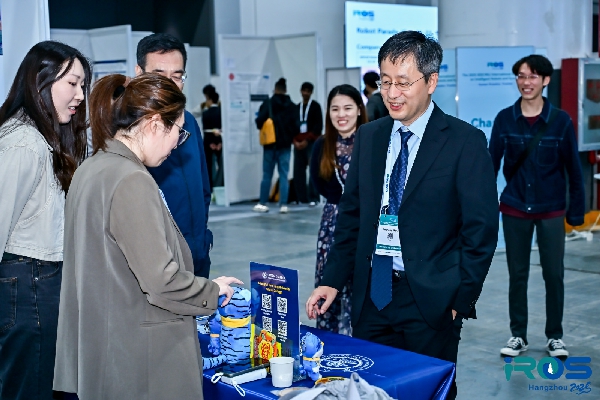From October 19 to 25, the IEEE/RSJ International Conference on Intelligent Robots and Systems (IROS 2025)—one of the world’s top two robotics conferences—was held in Hangzhou, capital of East China’s Zhejiang Province. The event brought together more than 8,000 experts, scholars, and industry representatives from over 60 countries and regions, making it the largest academic gathering in the global robotics community. Professor Hesheng Wang, Dean of Shanghai Jiao Tong University Global College (SJTUGC, abbreviated as GC), serves as General Chair of the conference jointly initiated by the IEEE Robotics and Automation Society (IEEE RAS), IEEE Industrial Electronics Society (IEEE IES), Robotics Society of Japan (RSJ), and Society of Instrument and Control Engineers (SICE).

With the official theme “Human-Robotics Frontier,” IROS 2025 featured a rich program including technical sessions, exhibitions, thematic forums, and industry networking events. The conference aimed to accelerate technology transfer and talent development, promote in-depth collaboration among industry, academia, and research, and inject new momentum into the innovative growth of China’s robotics industry.

In his remarks, Wang stated that hosting IROS 2025 in China reflects the global community’s strong recognition of the country’s growing capabilities in robotics. In recent years, China’s academic influence in the field has risen rapidly, with both paper submissions and acceptances at leading conferences ranking among the world’s highest. The country is moving from a technology follower to a major innovator in robotics research and development.


Scenes from the event
Throughout the week-long conference, Chinese scholars and enterprises presented nearly 1,000 papers and dozens of keynote talks, showcasing advances in robotic perception, decision-making, and actuation. These achievements highlight China’s rapid progress in industrial innovation “from 1 to 100” and its capacity for original breakthroughs “from 0 to 1,” further strengthening its position in the global robotics landscape.
